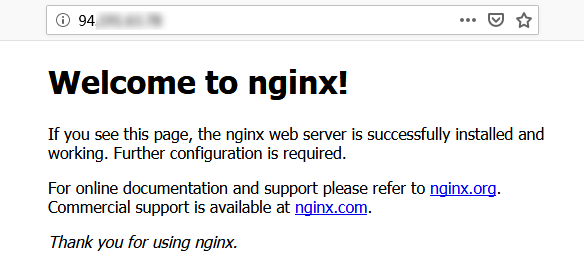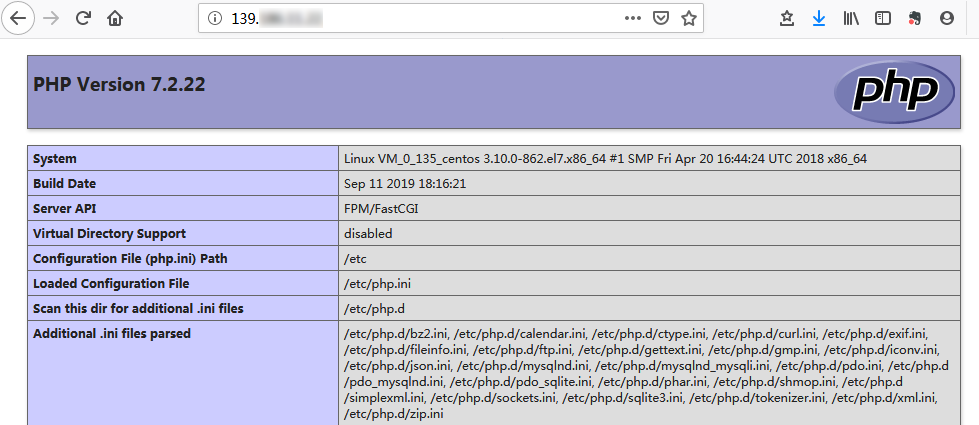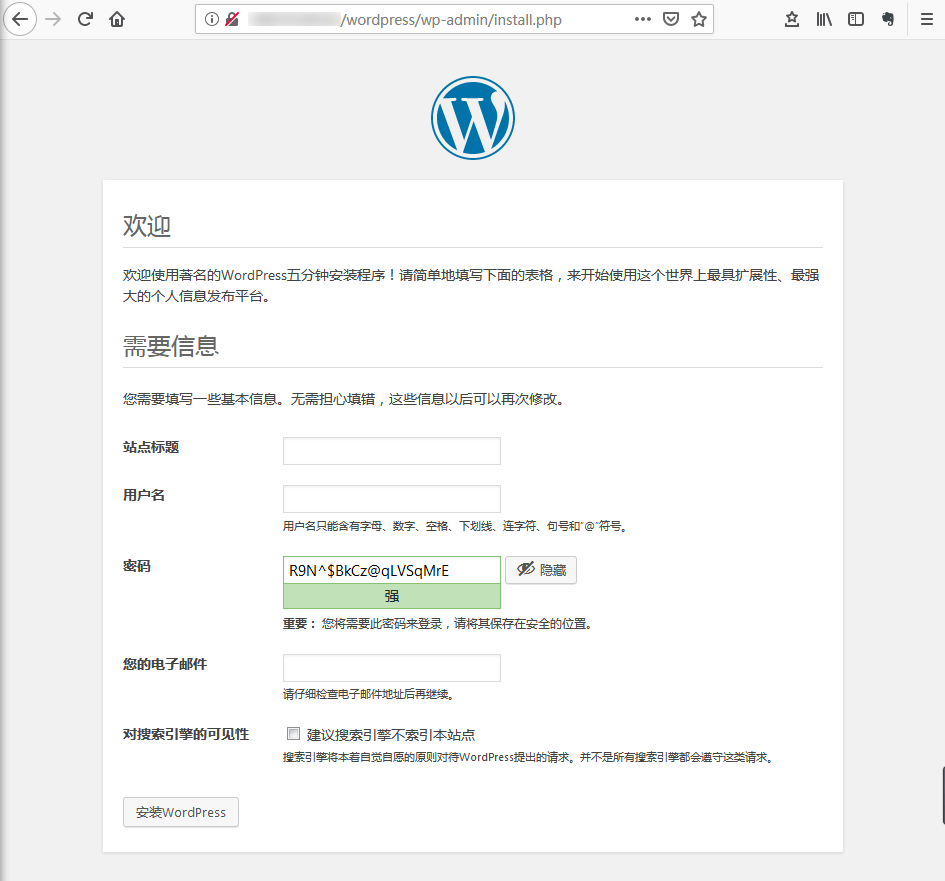手动搭建 LNMP 环境(CentOS 7)
操作场景
LNMP 环境是指在 Linux 系统下,由 Nginx + MySQL/MariaDB + PHP 组成的网站服务器架构。
本文搭建的 LNMP 环境软件组成版本及说明如下:
- Linux:Linux 操作系统 以CentOS 7.9 为例。
- Nginx:Web 服务器 以Nginx 1.17.7 为例。
- MariaDB:数据库 以 MariaDB 10.4.8 为例。
- PHP:脚本语言 以 PHP 7.2.22 为例。
关闭防火墙和SElinux
systemctl stop firewalld
systemctl disable firewalld
vi /etc/selinux/config
SELINUX=disabled
reboot
安装 Nginx
1.执行以下命令,在 /etc/yum.repos.d/ 下创建 nginx.repo 文件。
vim /etc/yum.repos.d/nginx.repo
2.按 i 切换至编辑模式,写入以下内容。
[nginx]
name = nginx repo
baseurl = https://nginx.org/packages/mainline/centos/7/$basearch/
gpgcheck = 0
enabled = 1
3.按 Esc,输入 :wq,保存文件并返回。
4.执行以下命令,安装 nginx。
yum install -y nginx
5.执行以下命令,打开 default.conf 文件。
vim /etc/nginx/conf.d/default.conf
6.按 i 切换至编辑模式,编辑 default.conf 文件。
7.找到 server{...},并将 server 大括号中相应的配置信息替换为如下内容。用于取消对 IPv6 地址的监听,同时配置 Nginx,实现与 PHP 的联动。
server {
listen 80;
root /usr/share/nginx/html;
server_name localhost;
#charset koi8-r;
#access_log /var/log/nginx/log/host.access.log main;
#
location / {
index index.php index.html index.htm;
}
#error_page 404 /404.html;
#redirect server error pages to the static page /50x.html
#
error_page 500 502 503 504 /50x.html;
location = /50x.html {
root /usr/share/nginx/html;
}
#pass the PHP scripts to FastCGI server listening on 127.0.0.1:9000
#
location ~ .php$ {
fastcgi_pass 127.0.0.1:9000;
fastcgi_index index.php;
fastcgi_param SCRIPT_FILENAME $document_root$fastcgi_script_name;
include fastcgi_params;
}
}
8.按 Esc,输入 :wq,保存文件并返回。
9.执行以下命令启动 Nginx。
systemctl start nginx
10.执行以下命令,设置 Nginx 为开机自启动。
systemctl enable nginx
11.在本地浏览器中访问以下地址,查看 Nginx 服务是否正常运行。
http://IP
显示如下,则说明 Nginx 安装配置成功。

安装数据库
1.执行以下命令,查看系统中是否已安装 MariaDB。
rpm -qa | grep -i mariadb
返回结果类似如下内容,则表示已存在 MariaDB。

为避免安装版本不同造成冲突,请执行以下命令移除已安装的 MariaDB。
yum -y remove mariadb
若返回结果为空,则说明未预先安装,则执行下一步。
2.执行以下命令,在 /etc/yum.repos.d/ 下创建 MariaDB.repo 文件。
vim /etc/yum.repos.d/MariaDB.repo
3.按 i 切换至编辑模式,写入以下内容,添加 MariaDB 软件库。
# MariaDB 10.4 CentOS repository list - created 2019-11-05 11:56 UTC
# http://downloads.mariadb.org/mariadb/repositories/
[mariadb]
name = MariaDB
baseurl = https://mirrors.cloud.tencent.com/mariadb/yum/10.4/centos7-amd64
gpgkey=https://mirrors.cloud.tencent.com/mariadb/yum/RPM-GPG-KEY-MariaDB
gpgcheck=1
4.按 Esc,输入 :wq,保存文件并返回。
5.执行以下命令,安装 MariaDB。此步骤耗时较长,请关注安装进度,等待安装完毕。
yum -y install MariaDB-client MariaDB-server
6.执行以下命令,启动 MariaDB 服务。
systemctl start mariadb
7.执行以下命令,设置 MariaDB 为开机自启动。
systemctl enable mariadb
8.执行以下命令,验证 MariaDB 是否安装成功。
mysql
显示结果如下,则成功安装。

9.执行以下命令,退出 MariaDB。
\q
安装配置 PHP
1.依次执行以下命令,更新 yum 中 PHP 的软件源。
rpm -Uvh https://mirrors.cloud.tencent.com/epel/epel-release-latest-7.noarch.rpm
rpm -Uvh https://mirror.webtatic.com/yum/el7/webtatic-release.rpm
2.执行以下命令,安装 PHP 7.2 所需要的包。
yum -y install mod_php72w.x86_64 php72w-cli.x86_64 php72w-common.x86_64 php72w-mysqlnd php72w-fpm.x86_64
3.执行以下命令,启动 PHP-FPM 服务。
systemctl start php-fpm
4.执行以下命令,设置 PHP-FPM 服务为开机自启动。
systemctl enable php-fpm
验证环境配置
当您完成环境配置后,可以通过以下验证 LNMP 环境是否搭建成功。
1.执行以下命令,创建测试文件。
echo "<?php phpinfo(); ?>" >> /usr/share/nginx/html/index.php
2.执行以下命令,重启 Nginx 服务。
systemctl restart nginx
3.在本地浏览器中访问如下地址,查看环境配置是否成功。
http://IP/index.php
显示结果如下,则说明环境配置成功。

手动搭建 WordPress 个人站点(Linux)
操作场景
WordPress 是一款使用 PHP 语言开发的博客平台,您可使用通过 WordPress 搭建属于个人的博客平台。
1.执行以下命令,进入 MariaDB。
mysql
2.执行以下命令,创建 MariaDB 数据库。例如 “wordpress”。
CREATE DATABASE wordpress;
3.执行以下命令,创建一个新用户。例如 “user”,登录密码为 123456。
CREATE USER 'user'@'localhost' IDENTIFIED BY '123456';
4.执行以下命令,赋予用户对 “wordpress” 数据库的全部权限。
GRANT ALL PRIVILEGES ON wordpress.* TO 'user'@'localhost';
5.执行以下命令,设置 root 账户密码。
说明
MariaDB 10.4 在 CentOS 系统上已增加了 root 账户免密登录功能,请执行以下步骤设置您的 root 账户密码并牢记。
ALTER USER 'root'@'localhost' IDENTIFIED BY 'new_password';
FLUSH PRIVILEGES;
6.执行以下命令,使所有配置生效。
FLUSH PRIVILEGES;
7.执行以下命令,退出 MariaDB。
\q
下载 WordPress
说明
WordPress 可从 WordPress 官方网站下载 WordPress 最新中文版本并安装,本教程采用 WordPress 中文版本。
1.执行以下命令,删除网站根目录下用于测试 PHP-Nginx 配置的index.php文件。
rm -rf /usr/share/nginx/html/index.php
2.依次执行以下命令,进入/usr/share/nginx/html/目录,并下载与解压 WordPress。
cd /usr/share/nginx/html
wget https://cn.wordpress.org/wordpress-5.0.4-zh_CN.tar.gz
tar zxvf wordpress-5.0.4-zh_CN.tar.gz
修改 WordPress 配置文件
1.依次执行以下命令,进入 WordPress 安装目录,将wp-config-sample.php文件复制到wp-config.php文件中,并将原先的示例配置文件保留作为备份。
cd /usr/share/nginx/html/wordpress
cp wp-config-sample.php wp-config.php
2.执行以下命令,打开并编辑新创建的配置文件。
vim wp-config.php
3.按 i 切换至编辑模式,找到文件中 MySQL 的部分,并将相关配置信息修改为配置 WordPress数据库 中的内容。
// ** MySQL settings - You can get this info from your web host ** // /** The name of the database for WordPress */ define('DB_NAME', 'wordpress');
/** MySQL database username */ define('DB_USER', 'user');
/** MySQL database password */ define('DB_PASSWORD', '123456');
/** MySQL hostname */ define('DB_HOST', 'localhost');
4.修改完成后,按 Esc,输入 :wq,保存文件返回。
验证 WordPress 安装
1.在浏览器地址栏输入http://IP/wordpress 文件夹,例如:
http://192.xxx.xxx.xx/wordpress
转至 WordPress 安装页,开始配置 WordPress。

2.根据 WordPress 安装向导提示输入以下安装信息,单击安装 WordPress,完成安装。
| 所需信息 | 说明 |
|---|---|
| 站点标题 | WordPress 网站名称。 |
| 用户名 | WordPress 管理员名称。出于安全考虑,建议设置一个不同于 admin 的名称。因为与默认用户名称 admin 相比,该名称更难破解。 |
| 密码 | 可以使用默认的密码或者自定义密码。请勿重复使用现有密码,并确保将密码保存在安全的位置。 |
| 您的电子邮件 | 用于接收通知的电子邮件地址。 |
现在可以登录 WordPress 博客,并开始发布博客文章了。